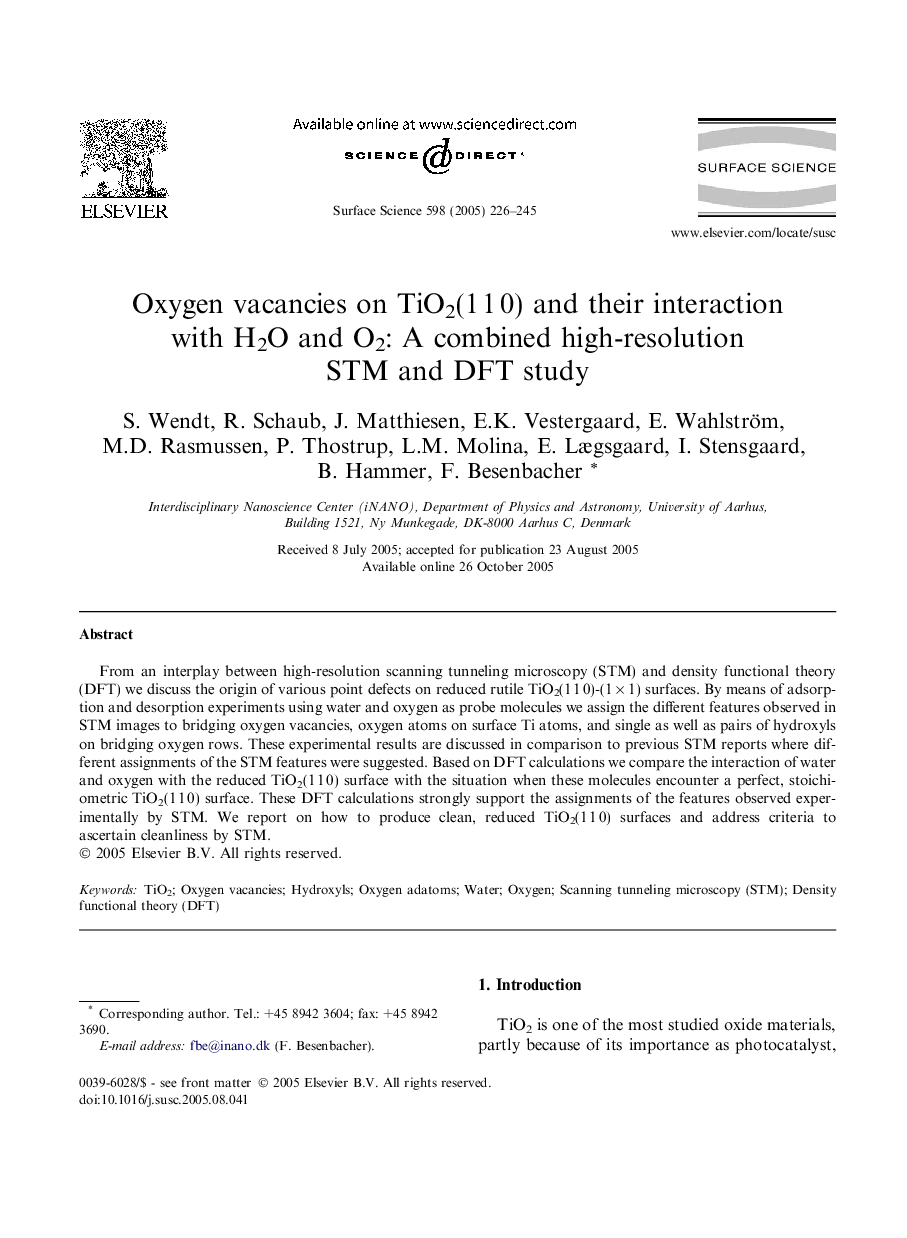| Article ID | Journal | Published Year | Pages | File Type |
|---|---|---|---|---|
| 9595006 | Surface Science | 2005 | 20 Pages |
Abstract
From an interplay between high-resolution scanning tunneling microscopy (STM) and density functional theory (DFT) we discuss the origin of various point defects on reduced rutile TiO2(1Â 1Â 0)-(1Â ÃÂ 1) surfaces. By means of adsorption and desorption experiments using water and oxygen as probe molecules we assign the different features observed in STM images to bridging oxygen vacancies, oxygen atoms on surface Ti atoms, and single as well as pairs of hydroxyls on bridging oxygen rows. These experimental results are discussed in comparison to previous STM reports where different assignments of the STM features were suggested. Based on DFT calculations we compare the interaction of water and oxygen with the reduced TiO2(1Â 1Â 0) surface with the situation when these molecules encounter a perfect, stoichiometric TiO2(1Â 1Â 0) surface. These DFT calculations strongly support the assignments of the features observed experimentally by STM. We report on how to produce clean, reduced TiO2(1Â 1Â 0) surfaces and address criteria to ascertain cleanliness by STM.
Keywords
Related Topics
Physical Sciences and Engineering
Chemistry
Physical and Theoretical Chemistry
Authors
S. Wendt, R. Schaub, J. Matthiesen, E.K. Vestergaard, E. Wahlström, M.D. Rasmussen, P. Thostrup, L.M. Molina, E. Lægsgaard, I. Stensgaard, B. Hammer, F. Besenbacher,
